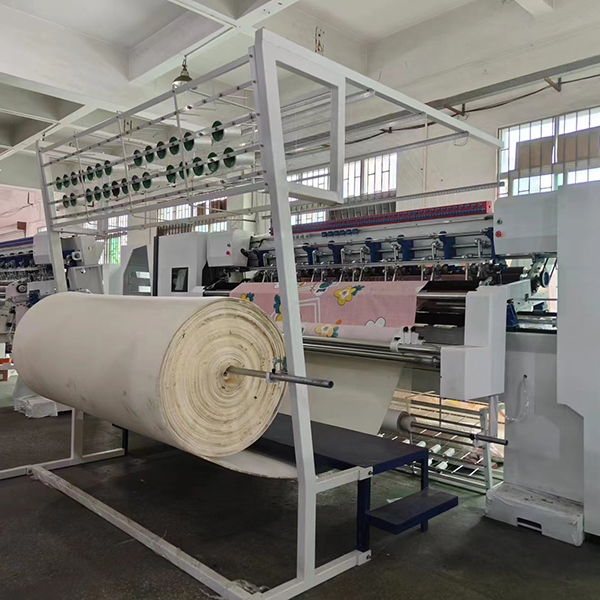
1) Thread break: Thread break is one of the most common faults of quilting machines. It may be caused by stitches that are too long or too short, fabric thickness that is too large, etc. The solution includes adjusting the stitch length, adjusting the fabric thickness, and replacing the needle if necessary.
2) Thread jam: Thread jam may be caused by loose thread or uncut thread ends. The solution includes tightening the thread and cutting the thread ends.
3) Sensor failure: During the quilting process, sensor failure may cause the needle to not lift or the needle lifting action to be abnormal. The solution is to readjust the sensor position.
4) Upper thread break: The reasons may include improper threading method, thread knotting, excessive thread tension, etc. The solution is to re-thread normally, adjust the thread clamp pressure, replace the needle, etc.
5) Bottom thread break: The reasons may include the bobbin not being fully inserted into the bobbin case, the bobbin being entangled by the thread, etc. The solution is to reinstall the bobbin, clean the bobbin case and bobbin.
6) Skipped thread: The reasons may include excessive thread tension, bent or blunt needles, etc. The solution is to adjust the thread tension, replace the needle, and select a needle of appropriate size.
7) The stitches do not meet the requirements: The reasons may include the machine thread not being fully pulled into the sensor and the threading method being unequal. The solution is to fully pull the machine thread into the sensor and thread the thread correctly.
8) The stitches are messy: The reasons may include the inappropriate needle size and the wrong threading steps. The solution is to select a needle suitable for the thread and fabric and rethread the machine.
9) Fabric wrinkles: The reasons may include too large stitches and blunt needle tips. The solution is to adjust the stitch length and check the needle tip status.
The above methods can effectively solve various common problems encountered during the use of quilting machines and ensure the normal operation and efficient use of the equipment.
2) Thread jam: Thread jam may be caused by loose thread or uncut thread ends. The solution includes tightening the thread and cutting the thread ends.
3) Sensor failure: During the quilting process, sensor failure may cause the needle to not lift or the needle lifting action to be abnormal. The solution is to readjust the sensor position.
4) Upper thread break: The reasons may include improper threading method, thread knotting, excessive thread tension, etc. The solution is to re-thread normally, adjust the thread clamp pressure, replace the needle, etc.
5) Bottom thread break: The reasons may include the bobbin not being fully inserted into the bobbin case, the bobbin being entangled by the thread, etc. The solution is to reinstall the bobbin, clean the bobbin case and bobbin.
6) Skipped thread: The reasons may include excessive thread tension, bent or blunt needles, etc. The solution is to adjust the thread tension, replace the needle, and select a needle of appropriate size.
7) The stitches do not meet the requirements: The reasons may include the machine thread not being fully pulled into the sensor and the threading method being unequal. The solution is to fully pull the machine thread into the sensor and thread the thread correctly.
8) The stitches are messy: The reasons may include the inappropriate needle size and the wrong threading steps. The solution is to select a needle suitable for the thread and fabric and rethread the machine.
9) Fabric wrinkles: The reasons may include too large stitches and blunt needle tips. The solution is to adjust the stitch length and check the needle tip status.
The above methods can effectively solve various common problems encountered during the use of quilting machines and ensure the normal operation and efficient use of the equipment.


 +8618818776182
+8618818776182
 +8618818776182
+8618818776182

